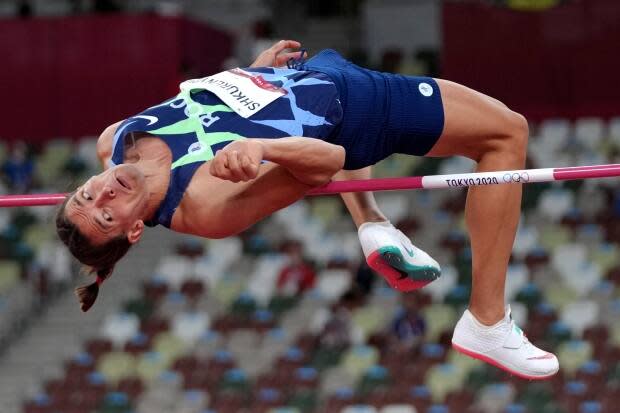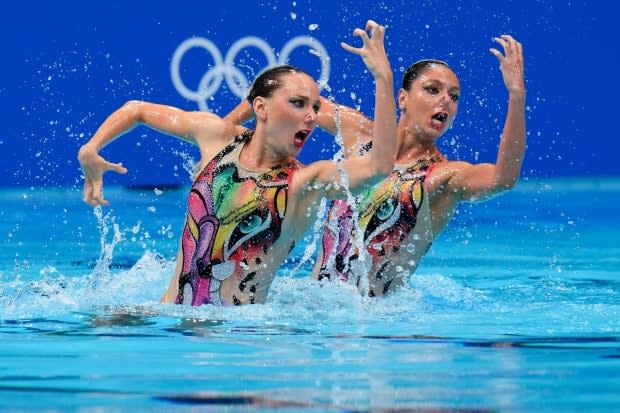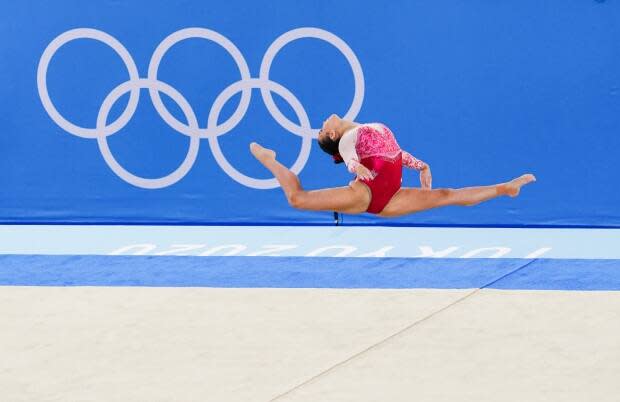Do athletes get money for medals? Why do divers use tiny towels? Your Olympic questions answered

Do Olympic athletes get any financial compensation for winning a medal? Why are Russian athletes competing, but not as Russia? And whatever happened to synchronized swimming? With the Tokyo Olympic Games winding down this week, CBC News provides some answers to those burning questions sparked after weeks of Olympic event viewing.
Medals
So how much gold is actually in those Olympic gold medals?
Very little. The last time Olympic winners were awarded medals with pure gold was back in 1912. Nowadays, according to International Olympic Committee guidelines, gold medals need only consist of at least six grams of gold. The remainder are composed of mostly silver.
Where do the metals come from to make the medals?
For the Tokyo Olympics, medals were made from more than 78,000 tonnes of recycled consumer electronics, including over six million used mobile phones, handed in by the public. The result was 32 kg of gold, 3,500 kg of silver and 2,200 kg of bronze that was needed to produce all 5,000 of Tokyo's Olympic medals.

Do athletes win any money for medals?
Some countries pay their Olympic athletes money for finishing in the top three. A U.S. Olympic athlete, for example, receives $37,500 US for each gold medal in Tokyo, plus $22,500 for silver and $15,000 for bronze. The Canadian Olympic Committee's Athlete Excellence Fund (AEF) awards cash to athletes who win medals for Team Canada. Gold medal winners receive $20,000 per medal, silver medal winners receive $15,000 per medal, and bronze winners receive $10,000 per medal.
Participants

There are Russian athletes competing. So why isn't Russia part of the medal total?
A doping scandal that emerged after the 2014 Sochi Olympics led to Russia being banned from the Tokyo Olympics. However, athletes from the country have been allowed to participate. Officially, they are not representing their country; they fall under the banner of the ROC (Russian Olympic Committee).
At these games, no Russian flag was allowed above any podium and the Russian national anthem could not be played. Instead, gold medalists from Russia got to hear Tchaikovsky's Piano Concerto No. 1. Neither the word "Russia," nor the Russian flag, was permitted on any uniform. But the red, white and blue colours from Russia's flag were allowed on team uniforms.
Does Puerto Rico have its own team?
When Jasmine Camacho-Quinn of Puerto Rico won the 100-metre hurdle Monday, some may have thought that her gold would just be added to the U.S. medal tally.
Although Puerto Rico is a U.S. unincorporated territory, the International Olympic Committee recognized Puerto Rico's National Olympic Committee as its own team in 1948. Other U.S territories, including the U.S. Virgin Islands, Guam and American Samoa, also have their own teams.
Events
Diving
Why do divers use small towels?

The fast-drying towels, known as shammies, are often used to dry off a car after a wash. They can hold 10 times their weight in liquid and quickly dry after being wrung out, the Washington Post reported.
Many dives consist of flips and twists and divers' hands hold onto their legs. If hands and legs are too dry or too wet, divers can't properly grip their upper legs while they're spinning fast in mid-air. A shammy's purpose is to mop the body to the right balance of dryness and moisture for optimal performance
Why do sprinklers spray water into the pool at diving events?
It's a safety feature. The sprinkling causes ripples and provides a visual cue for divers that helps them visualize where the pool is in relation to their dive, according to SportingNews.com. It helps divers judge when to enter their rotation as they dive into the water. According to facilities guidelines from the international water sports federation: "Mechanical surface agitation shall be installed under the diving facilities to aid the divers in their visual perception of the surface of the water."
Swimming
Why isn't it called 'Synchronized Swimming' anymore?

In 2017, the international swimming governing body changed the name of the sport to "artistic swimming" following suggestions by the International Olympic Committee to attract a wider audience and to align it with other artistic sports. Synchro Canada welcomed the change, saying that the term "synchronized swimming" did not as accurately encompass all the aspects of the sport.
But not everyone was happy. Russia opposed the move and thousands protested online to reverse the decision at the website change.org.
Water polo
Why do water polo athletes wear helmet caps?

For protection, and specifically, to protect their ears. The caps contain extra padding for the ear area, as players are at risk for a ruptured ear drum if hit by the ball. The caps also serve another purpose: identification for other teammates.
Gymnastics
Why do women, and not men, use music for the individual floor exercises?

The first large-scale meeting of male gymnasts was the 1896 Olympics. But women wouldn't compete until decades later, in 1928.
Georgia Cervin, a former international gymnast told CNN that when gymnastics was introduced to the Olympics, men's routines were expected to highlight strength while women's routines emphasized grace and femininity.
"Women were expected to do soft, rhythmic, flowing, graceful movements that emphasized beauty and flexibility," Cervin said. "This is why they perform to music, and the men don't. Men's floor routines were expected to emphasize strength instead."

 Yahoo Sports
Yahoo Sports 